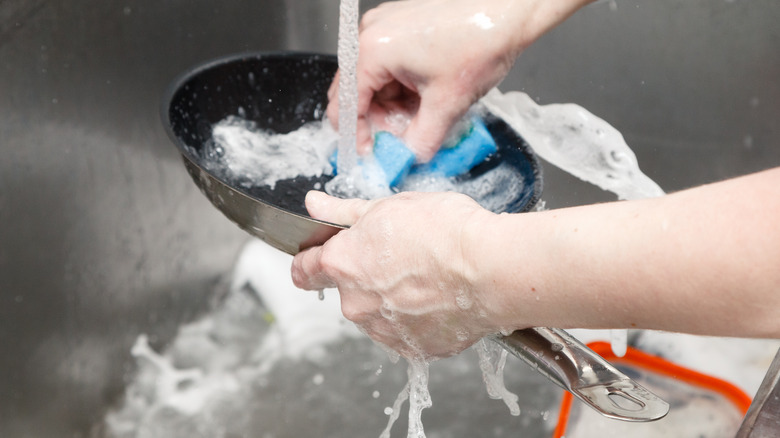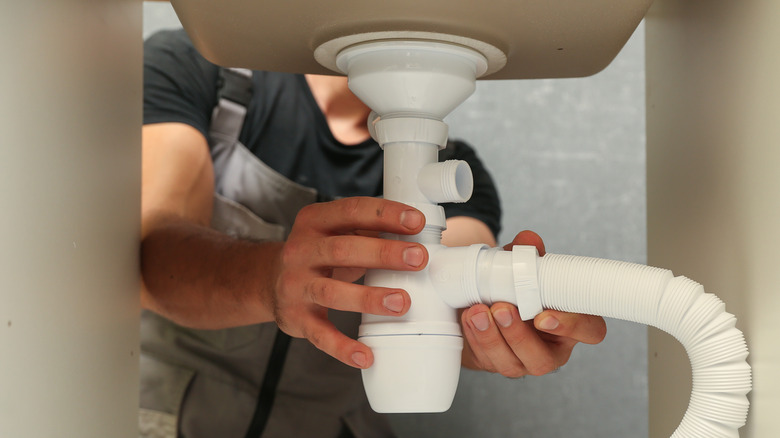Why You Should Use Cold Water To Remove Grease From Pans
When it comes to washing dishes, hot water and soap is always recommended. So when you have lots of grease on your pots and pans, the best solution may seem to soak them in hot, soapy water to help reduce scrubbing time and lessen the amount of grease on the sponge and your hands. Although the answer may seem obvious, it's possible you haven't considered how clean up can affect the sink and areas that are often unseen.
Have you considered where all the soapy water and grease go once they leave your sink? Hot water may be helpful for removing grease, but you also need to think about your drain. Getting your pots and pans sparking clean may be your goal and concern, but it's also important to consider how your cleanup methods could affect the drains and tubes. If you want to avoid having back-ups and clogs, you'll want to consider your drain.
What's the best temperature to rinse grease from pans?
So what's the best way to clean grease from pans and pots and consider the drain? You want to use the coldest water when rinsing. Doyle James, president of Mr. Rooter Plumbing, told The Kitchn, "Cold water will help the grease to remain solid, which allows it to travel down drain lines more easily." Now for many people that probably isn't obvious. Plus, we're often not thinking about where the dirty water goes every time we wash dishes — we just want the kitchen clean!
But if you consider it, you definitely don't want the grease sticking to the drainage pipes because that will only lead to buildup. Even though water and oil don't mix easily, when warm water and grease combine, it creates an emulsion (via The Kitchn).
This is a problem because as the water passes through drainage tube and cools, it slowly solidifies and can stick to the inside, creating unwanted buildup, according to The Kitchn. Over time, of course, this can lead to a clog. So next time you're cleaning oily dishes, remember to use cold water when you rinse to help keep the pipes in good condition.

